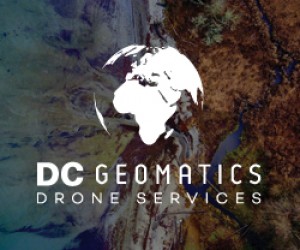An unmanned aerial vehicle (UAV), or drone as it is otherwise known, is an aircraft without a human pilot aboard. A drone survey involves using UAVs to survey land across a variety of industries, from mining to construction to engineering. Piloted by remote, these small, ultra-light aircraft are designed to collect detailed survey information while transmitting that data back to head office. This data can be used to create highly accurate maps and provide valuable information to those considering major mining projects.
When it comes to land surveying, drone technology has dramatically changed the mining industry and drones have become increasingly popular in surveying projects as they allow for the swift, accurate collection of data and safe, efficient assessments that don’t incur the time or energy expenses required by human intervention.
The benefits of using a drone in mining surveying:
1. Accurate data collection
Drones can collect all kinds of data, including photography, LIDAR, and video, and instantly transmit that data anywhere in the world or use it to create highly detailed topographical maps in a relatively short amount of time.
2. Speedy data collection
On-foot surveying requires manpower, long travel hours, and the use of unwieldy surveying equipment. This all means extra time out in the field. In contrast, a drone survey can be completed swiftly and accurately in a fraction of the time. With a drone, you can also schedule ad hoc flights for your site (or an area of your site) to gain up-to-date information as often as required.
3. Safe data collection
Mining and engineering projects, as well as infrastructure inspections, carry with them elevated levels of risk. While surveys are essential to ensure the safety of certain environments, surveying by foot can be risky, especially in difficult-to-access areas. The speed and precision of drones as well as the software used to collect and analyse the collected data allow for a safe, efficient collection process, at a fraction of the cost and time required by traditional surveying methods.
4. Recording your project’s story
The hi-tech cameras and recording equipment used by drones mean that you can document every stage of your mining project’s progress, from start to finish. These videos can be used as part of guided demonstrations and as records of the surveys carried out during a project over time. At the same time, the maps generated by a drone survey can be used throughout your project to determine the feasibility of each step.
5. Reductions in cost and time
While a drone-driven survey might seem expensive, the opposite is true. Drone technology allows for powerful and efficient work, allowing companies to redirect their budgets away from expensive in-person mapping and reporting to a much wider online collection and distribution of data.
The future is drone driven
When it comes to mining, it’s safe to say that drones (and the innovative technology they offer) in the surveying space are the way of the future. Rapidly evolving innovations in the applications of mining drones (including terrain exploration and thermal monitoring) are sure signs that drones will continue to be at the forefront of mining technology for a long time to come.
DC Geomatics offers total aerial surveying services to the mining sector across Africa. Our team of experienced surveyors are equipped to generate extremely accurate surveys and cutting-edge maps for all our clients, reducing risk and saving on cost.
Interested in professional aerial surveying services for your mining project? Visit www.dcgeomatics.co.za to find out how we can help you.






